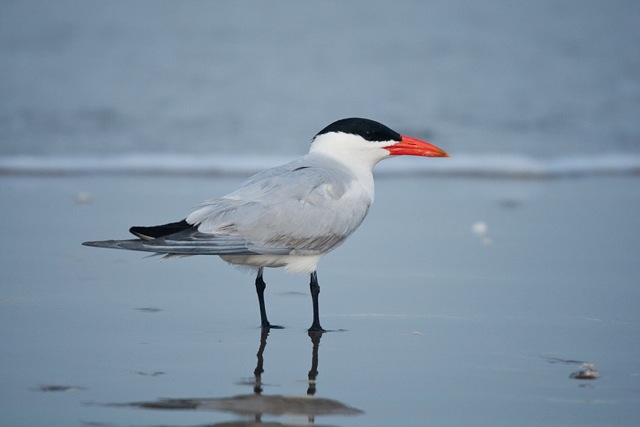This time we’re talking about a local species – this came up because, here in the Seattle office, near the ship canal, I just started hearing their arrival this spring. You can check here to listen for yourself http://www.allaboutbirds.org/guide/caspian_tern/idThey remind me of pterodactyls, though I’ve never really heard one of those. The Caspian is the world’s largest tern with a wingspan of about 55 inches but only weighs about 19-27 ounces – which is a reason it can fly so fast. They mostly feed on fish, diving straight down from 30 ft or more to capture fish just under the water surface. They are found on all continents except Antarctica.
So what’s a tern vs a gull? Well, gulls generally have broad wings, slightly hooked beaks, and float on the water to pick up prey. Terns have long, pointed, swept-back wings and sharp, pointed-forward beaks, and dive into the water for prey. Which means terns are way sleek and cooler than lumbering gulls.
Here in Seattle Caspian terns will nest on flat-topped buildings around the ship canal. When I used to work downtown and take a long bike ride home starting through Myrtle-Edwards Park, I’d pedal past a large colony at the end of the park on a one story warehouse – but the tech boom here took down this building and I’ve been looking for where they nest near us – I’ll let you know. This species nested in a huge colony on Rice Island in the lower Columbia River, which is a dredge spoil island. The problem was that the colony reached 16,000 individuals and they were sucking down large numbers of juvenile salmon – almost as fast as any snack laid out in the Seattle office kitchen! So the Corps and other agencies studied the issue and then discouraged nesting on Rice Island and encouraged them to nest on East Sand Island, 26 miles closer to the ocean. This was done by creating habitat on East Sand Island, using attractant calls at East Sand Island, and discouraging nesting on Rice Island by hazing and adding plantings (they like bare ground). The project was a success. Further studies have indicated that the the diet of birds nesting on East Sand Island contains a much lower percentage of juvenile salmon than when the colony was upriver.
Keep an eye and ear out for them!
